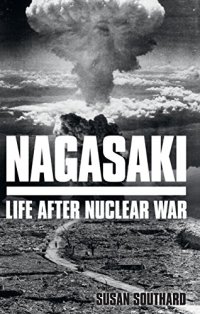
Ebook: Nagasaki: Life After Nuclear War
Author: Susan Southard
- Tags: Japan Asia History Nuclear Weapons Warfare Military World Civilization Culture Expeditions Discoveries Jewish Religious Slavery Emancipation Women in Engineering Aerospace Automotive Bioengineering Chemical Civil Environmental Computer Modelling Construction Design Electrical Electronics Energy Production Extraction Industrial Manufacturing Operational Systems Marine Materials Material Science Mechanical Technology Reference Telecommunications Sensors Transportation
- Year: 2015
- Publisher: Souvenir Press Ltd
- Language: English
- epub
A Washington Post Best Book of the Year
An Economist Best Book of the Year
“A poignant and complex picture of the second atomic bomb’s enduring physical and psychological tolls. Eyewitness accounts are visceral and haunting. . . . But the book’s biggest achievement is its treatment of the aftershocks in the decades since 1945.” —The New Yorker
A powerful and unflinching account of the enduring impact of nuclear war, told through the stories of those who survived.
On August 9, 1945, three days after the atomic bombing of Hiroshima, the United States dropped a second atomic bomb on Nagasaki, a small port city on Japan’s southernmost island. An estimated 74,000 people died within the first five months, and another 75,000 were injured.
Published on the seventieth anniversary of the bombing, Nagasaki takes readers from the morning of the bombing to the city today, telling the first-hand experiences of five survivors, all of whom were teenagers at the time of the devastation. Susan Southard has spent years interviewing hibakusha (“bomb-affected people”) and researching the physical, emotional, and social challenges of post-atomic life. She weaves together dramatic eyewitness accounts with searing analysis of the policies of censorship and denial that colored much of what was reported about the bombing both in the United States and Japan.
A gripping narrative of human resilience, Nagasaki will help shape public discussion and debate over one of the most controversial wartime acts in history.
An Economist Best Book of the Year
“A poignant and complex picture of the second atomic bomb’s enduring physical and psychological tolls. Eyewitness accounts are visceral and haunting. . . . But the book’s biggest achievement is its treatment of the aftershocks in the decades since 1945.” —The New Yorker
A powerful and unflinching account of the enduring impact of nuclear war, told through the stories of those who survived.
On August 9, 1945, three days after the atomic bombing of Hiroshima, the United States dropped a second atomic bomb on Nagasaki, a small port city on Japan’s southernmost island. An estimated 74,000 people died within the first five months, and another 75,000 were injured.
Published on the seventieth anniversary of the bombing, Nagasaki takes readers from the morning of the bombing to the city today, telling the first-hand experiences of five survivors, all of whom were teenagers at the time of the devastation. Susan Southard has spent years interviewing hibakusha (“bomb-affected people”) and researching the physical, emotional, and social challenges of post-atomic life. She weaves together dramatic eyewitness accounts with searing analysis of the policies of censorship and denial that colored much of what was reported about the bombing both in the United States and Japan.
A gripping narrative of human resilience, Nagasaki will help shape public discussion and debate over one of the most controversial wartime acts in history.
Download the book Nagasaki: Life After Nuclear War for free or read online
Continue reading on any device:

Last viewed books
Related books
{related-news}
Comments (0)